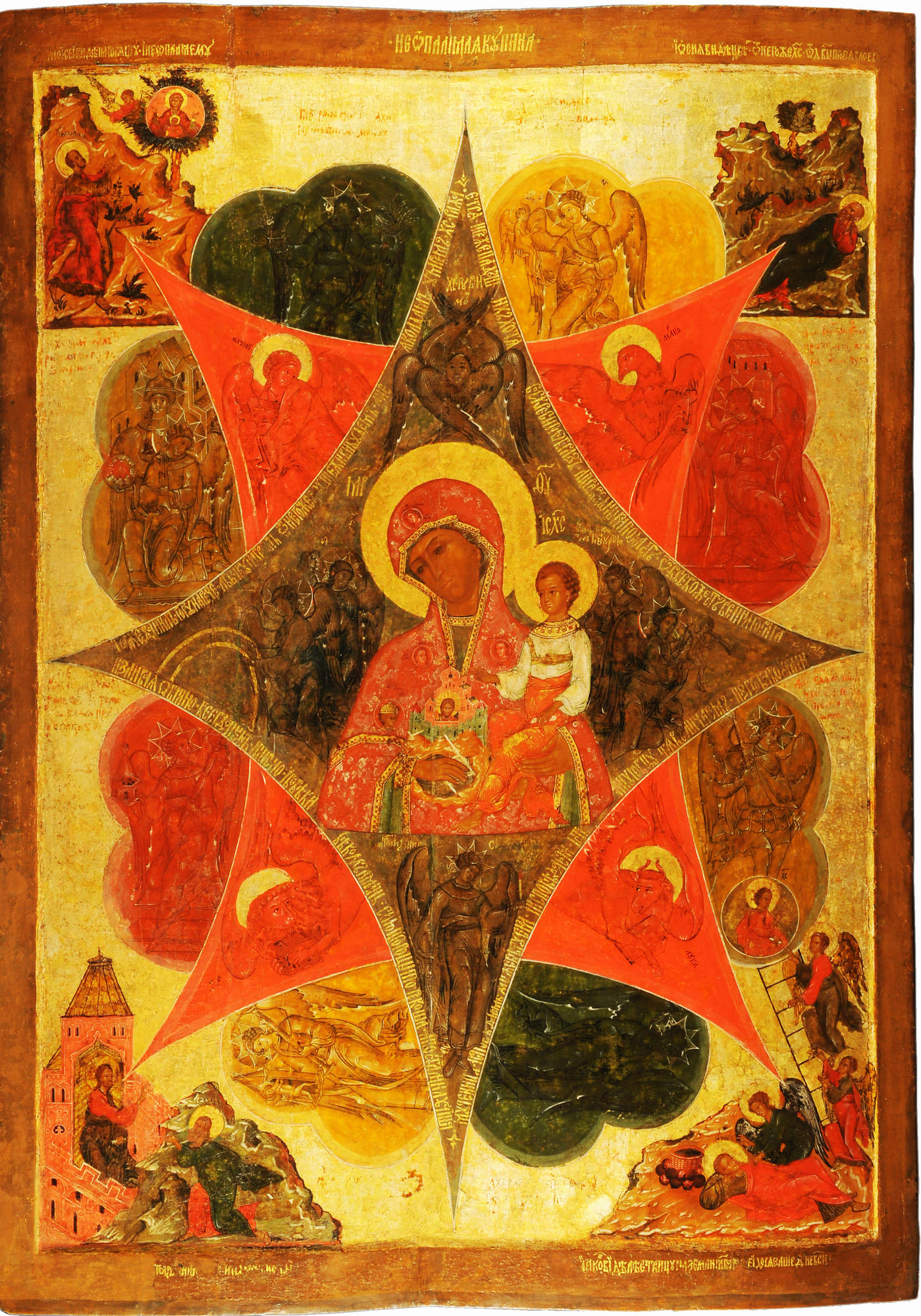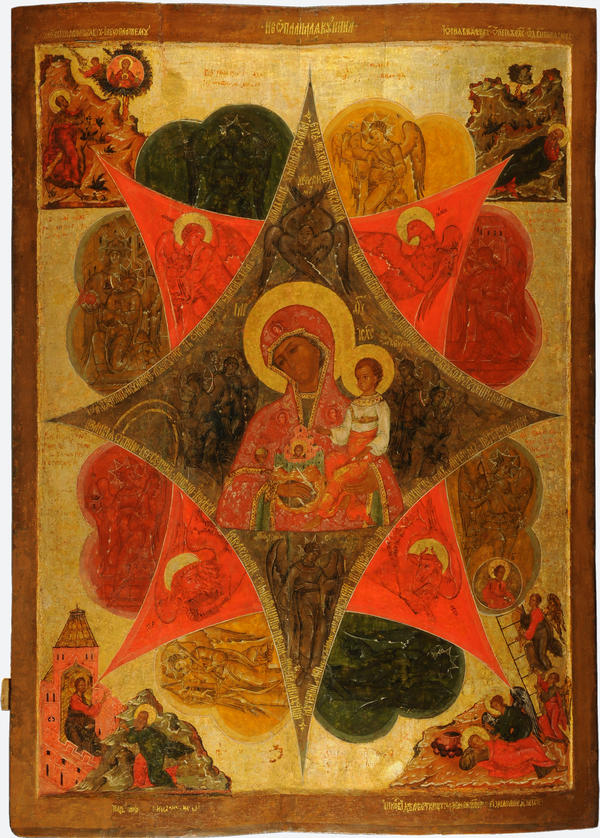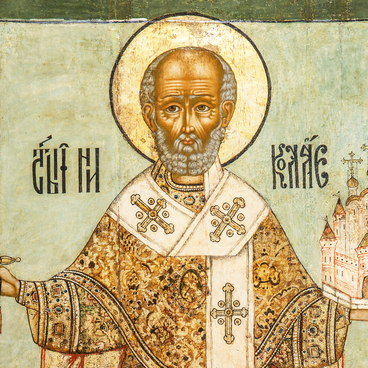The icon The Burning Bush was painted by an unknown artist of the early third of the 17th century. It was kept as part of the iconostasis in the cathedral of the monastery of Our Saviour in Murom. The image is named after the biblical subject Moses and the burning bush. According to it, God appeared unto him in the vicinity of Mount Sinai. Moses was shepherding a flock of sheep there. God appeared in front of his eyes in a flame of a burning but incombustible bush. This thornbush became one of the main symbols of the Holy Mother.
The icon is painted against the golden background. Its corners show prophecies about the Mother of God written in the Old Testament. Among them there are scenes with visions of the prophets Moses and Ezekiel. Ancient Russian icons of the burning bush had not only the religious and dogmatic symbols. They reflected what people of that time thought about the organization of the world. In many ways these thoughts had something in common with Slavic mythology. The icon’s composition is a merger of the Old and New Testaments. A binding thread between them is the prophecy about the incarnation of God via the Virgin.
The Holy Mother holding Jesus Christ in her arms is depicted against the background of a star. The star is formed by the two crossed rhombs of the ocher-yellow-brownish and scarlet colours. The star made by the rhombs refers supplicants to the events of the Nativity of Christ. The outer rhomb symbolizes the flame of the bush. To depict it the painter used red paint from mercuric sulphide called cinnabar. In the corners of the outer rhomb symbols of the evangelists are painted. The inner rhomb represents the bush of bramble proper. Against this background and in the coloured lobes between the star rays come though the shapes of angels holding various attributes in their hands. These symbolize various natural phenomena.
Such shape of the halo appeared as early as the first centuries of Christianity. Later it became widespread in Byzantian iconography in depicting the Saviour and the Holy Mother. The image of the Virgin Mary enclosed into an eight pointed star can be often seen on the crosses and panagias that reached Russia from Byzantium. A panagia is a small, richly adorned medallion with the picture of the Virgin Mary. Such medallions are worn by hierarchs.
The icon was restored in the I.Grabar research and restoration centre in 1993-2012.
The icon is painted against the golden background. Its corners show prophecies about the Mother of God written in the Old Testament. Among them there are scenes with visions of the prophets Moses and Ezekiel. Ancient Russian icons of the burning bush had not only the religious and dogmatic symbols. They reflected what people of that time thought about the organization of the world. In many ways these thoughts had something in common with Slavic mythology. The icon’s composition is a merger of the Old and New Testaments. A binding thread between them is the prophecy about the incarnation of God via the Virgin.
The Holy Mother holding Jesus Christ in her arms is depicted against the background of a star. The star is formed by the two crossed rhombs of the ocher-yellow-brownish and scarlet colours. The star made by the rhombs refers supplicants to the events of the Nativity of Christ. The outer rhomb symbolizes the flame of the bush. To depict it the painter used red paint from mercuric sulphide called cinnabar. In the corners of the outer rhomb symbols of the evangelists are painted. The inner rhomb represents the bush of bramble proper. Against this background and in the coloured lobes between the star rays come though the shapes of angels holding various attributes in their hands. These symbolize various natural phenomena.
Such shape of the halo appeared as early as the first centuries of Christianity. Later it became widespread in Byzantian iconography in depicting the Saviour and the Holy Mother. The image of the Virgin Mary enclosed into an eight pointed star can be often seen on the crosses and panagias that reached Russia from Byzantium. A panagia is a small, richly adorned medallion with the picture of the Virgin Mary. Such medallions are worn by hierarchs.
The icon was restored in the I.Grabar research and restoration centre in 1993-2012.




